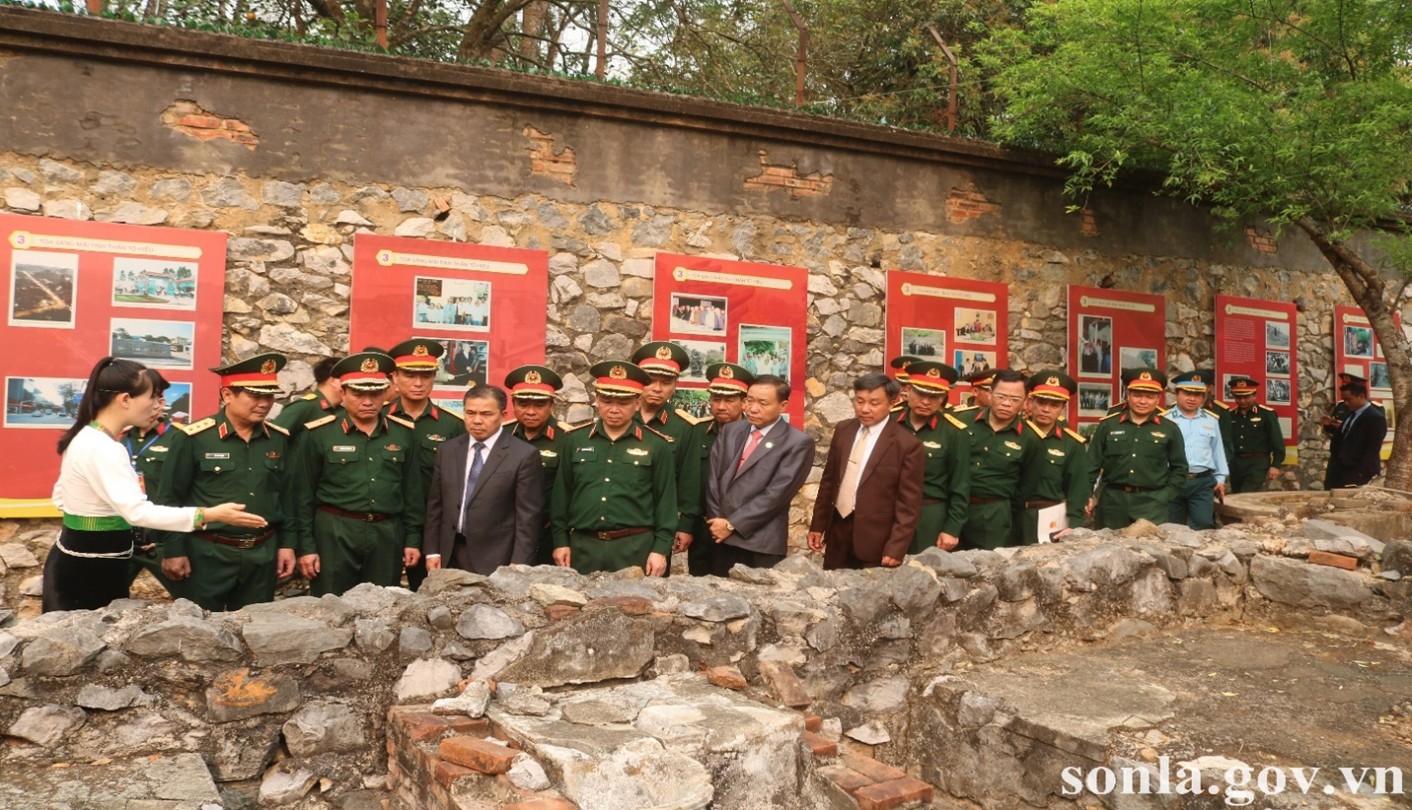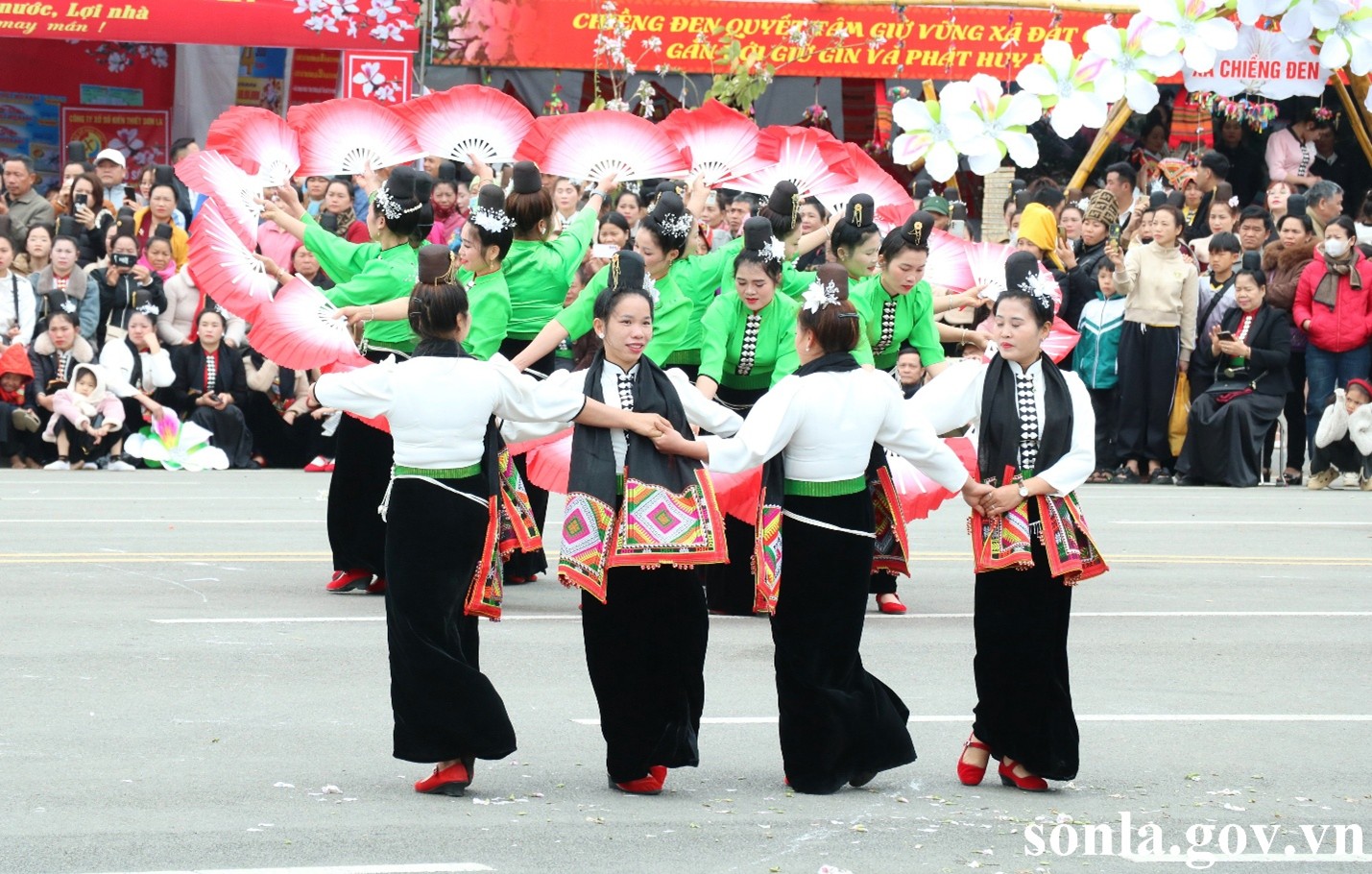(en.sonla.gov.vn) In recent years, Son La has been focusing on developing a diverse and multi-sector tourism industry, leveraging its natural, cultural, historical, and social potential. The province aims to position itself as an attractive and safe destination, and as the tourism hub of the Northwest region, offering distinctive, professional, sustainable, and internationally integrated tourism products.
With its advantages in natural landscapes and unique cultural identity, Son La’s tourism sector has focused on developing a wide range of products linked to ecology, agriculture, and local culture. To date, the province boasts 15 recognized tourism areas and sites, including one national tourism area, one provincial-level tourism area, and 13 provincial-level tourism sites. Its five main tourism product groups include: Ecological and agricultural tourism. Cultural and historical tourism. Community-based tourism. Resort, leisure, and wellness tourism. Themed tourism (sports, conferences, seminars, and gastronomy). Several destinations have emerged as highlights of Son La tourism, such as the Moc Chau national tourism area, Tay Bac Square, the Special national relic of Son La prison, the Special national relic of the Vietnam–Laos revolutionary base, the Co Noi T-junction historic site, the anti-French resistance historic forest site of Ban Nhot, the Pha Din pass tourism area, the Son La hydropower reservoir tourism area, and ecological/agricultural attractions such as the Tea village and Na Ka plum valley.

The Special national relic of Son La prison
Community-based tourism in Son La is also a sustainable development direction that the province prioritizes. Beyond its economic benefits, this model delivers lasting cultural value to local communities. Several villages have successfully developed community-based tourism, such as Hua Tat – Van Ho (with A Chu homestay already established as a recognizable brand), the Pristine village – Hang Tau, and Ngoc Chien, attracting a large number of visitors, especially international tourists. Visitors can enjoy a variety of cultural experiences, including the Thai traditional Xoe dance, local festivals, the Moc Chau ethnic culture week, the Son Tra flower festival, the Quynh Nhai boat racing festival, and the Xip Xi New year festival in Phu Yen. Alongside other tourism products, ecological and agricultural tourism has also built a distinctive brand and image for Son La on Vietnam’s tourism map. Activities such as visiting flower fields, grasslands, tea plantations, strawberry farms, plum and mango orchards, coffee plantations, and participating in the Fruit Picking Festival offer visitors diverse seasonal tourism experiences all year round.
The development of tourism products in Son La has been implemented in line with strategic orientations, ensuring the effective utilization of the province’s potential and advantages while maximizing the value of tourism resources in connection with national target programs. The province promotes product development through regional linkages, supporting cooperation within the expanded Northwestern provinces’ eight-province alliance, thereby fostering mutual growth within the region. Efforts are made to maintain high standards in product and service quality, meeting the expectations of visitors, and to develop tourism products that are professional, distinctive, and appealing. A variety of tourism products linked to ecology, agriculture, and indigenous culture have been created to meet current trends and market demands. The province is conducting surveys and assessments to identify tourism potential, strengths, and resources, focusing on product development that preserves and promotes ethnic cultural heritage. Activities include reenacting traditional festivals and rituals, organizing folk performance troupes to present ethnic folk songs, dances, traditional musical instruments, and folk games at tourist sites, as well as developing traditional handicrafts—offering visitors opportunities for enjoyment, study, and authentic cultural experiences.
In addition, Son La province is actively implementing the National target program for Socio-economic development in ethnic minority and mountainous areas for the 2021–2025 period. Within this framework, under Project 6, titled “Preserving and promoting the fine traditional cultural values of ethnic minorities in association with tourism development,” the province focuses on activities that serve communication, promotion, research, and the assessment of tourism potential. Key efforts include identifying and developing signature tourism products for ethnic minority areas, supporting the creation of ecological museum models aimed at preserving intangible cultural heritage within ethnic communities, and integrating these initiatives into broader community and tourism development. These activities prioritize particularly disadvantaged communes and villages in ethnic minority and mountainous regions, with the dual aim of safeguarding cultural heritage and fostering sustainable tourism-based livelihoods.

The province focuses on developing festivals that attract large numbers of visitors.
Communes and wards are developing tourism products linked to natural resources and ethnic cultural identities. Initiatives include establishing traditional folk art troupes, restoring and building traditional blacksmithing workshops, and preserving Mong ethnic heritage houses in Ta So village; developing a green tourism model in Vat village; and creating new tourist attractions that showcase tea hills, grasslands, and flower fields, such as Mocha Hill and Moc Lotus pond. Annual cultural, festival, and sports events are being elevated into signature tourism products, notably the Vietnam Trail Marathon (held for seven consecutive years, attracting over 21,350 athletes from more than 40 countries and territories), the 9th Moc Chau fruit picking festival, and the Moc Chau culture and tourism Week. The province is also promoting the value of historical and cultural relics and scenic landscapes, such as the Tay Tien Regiment 52 memorial site, Moc Ly Fort, and Bat Cave; developing Ta Phen community-based tourism village as a model for replication; and offering experience tours such as trekking to conquer Mount Ta Chi Nhu via the ancient tea forest in Nam Nghiep village, Ngoc Chien commune, at an altitude of 2,979 meters above sea level; photography tours with Son Tra fruit in Nam Nghiep; documenting and developing the Nang Han temple and Festival in Muong Trai commune; the Giant apple harvest festival in Muong Bu commune; and the Boat racing festival in Ta Bu commune. Other events include the Hair washing festival, Nang Han festival, and traditional boat racing.
At present, Son La’s accommodation services are continuously expanding in scale and diversifying in types, tailored to the unique characteristics and potential of each locality. Service quality has steadily improved, leaving a positive impression and attracting more visitors. The province now boasts 641 lodging establishments, including seven hotels rated three stars or higher, featuring large-scale operations, modern facilities, impressive architecture, and professional services that meet both leisure and event-hosting needs at the local and provincial levels. The growth of the tourism sector, driven by distinctive products, has generated spillover effects across various industries, contributing to economic restructuring, poverty reduction, and improved living standards for residents. These developments are steadily positioning Sơn La as a leading tourism hub in the Northwest region.
Nhu Thuy
Translated by Huyen Vu